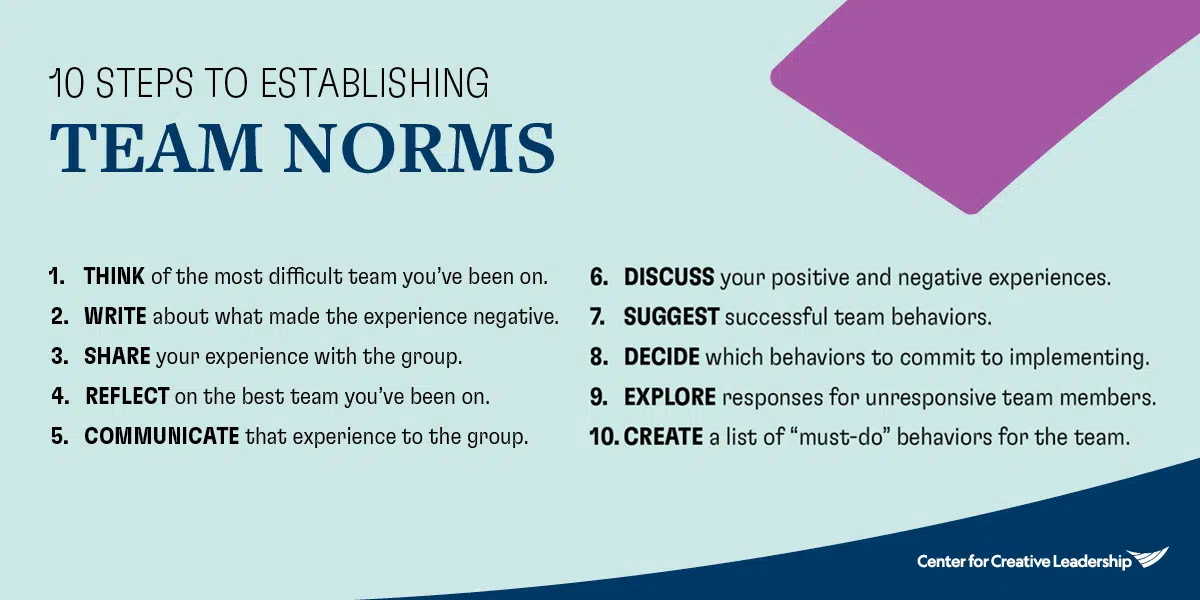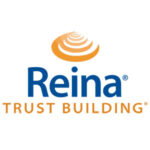Team Leaders Can Help Set Behavioral Expectations
In every relationship — personal and professional — our behavior is guided by a set of rules, or social norms. Say “please” and “thank you;” don’t interrupt; make eye contact. The list goes on. In a professional environment, these norms are generally understood and accepted. For the most part, they go unspoken.
On a team, however, when multiple people work together to solve problems and make decisions, it’s important to discuss and agree on team norms.
Team norms are a set of rules or operating principles that shape team members’ interactions. Team norms establish clear, agreed-upon behavior, how the work will get done, and what team members can expect of each other. This is a key way to build trust, which is critical for team success.
While establishing clear, agreed-upon norms for behavior is a good thing to do, setting team norms can feel like a joke in many organizations. Even if team members are well-intentioned, their day-to-day challenges can easily override norms that are unrealistic.
If you are a team leader or project manager, consider the team norms that matter to you and to the work. Understanding your own perspective will help you think about your own behavior and effective ways to guide the team.
Think of a time when you were part of a work team that accomplished something truly exceptional and consider these questions:
- What did leadership do to contribute to this success?
- What did fellow team members do?
- What did you do?
- How could you and your team recreate more of these positive aspects today?
10 Steps for Establishing Team Norms
Early on, you’ll want to get the group talking about team norms. Instead of scheduling an official “Team Norms Meeting,” bring it up organically during one of your team’s first gatherings. It may make sense to discuss in tandem with creating your team charter.
Here’s an activity we share with participants in our team development programs. Following these 10 steps, you can facilitate a productive discussion with your team and agree on a set of best practices and team norms.
Step 1. Ask each member to think of the worst team they’ve served on. Any group counts — a work team, a volunteer group, a sports team — as long as the members were dependent on each other to produce results.
Step 2. Have each team member spend 2 minutes writing down what made that experience so terrible. Direct them to be as specific as possible about their reasons.
Step 3. Ask team members to share their experiences with the whole group.
Step 4. Ask each member to think of their best team experience. As with the negative experience, each team member should spend 2 minutes writing down what made the experience so good.
Step 5. As before, encourage team members to share their experiences with the whole team.
Step 6. With these comments in mind, discuss as a group what makes for a good team experience and what makes for a bad one.
Step 7. Ask team members to suggest behaviors and team norms that would contribute to the current team’s success. Pay attention to the most relevant issues or actions that could affect the team’s biggest challenges. Be sure to keep track of suggestions on a screen or large sheet of paper that all team members can view.
Step 8. Discuss the suggestions as a group and decide as a group which ones the team can support and adhere to.
As part of this step, flag any concerns or challenges that the team thinks they may struggle with. Even if you can’t identify a solid solution, doing this keeps reality in the forefront.
For example, at CCL, most of us are on multiple research, writing, or planning teams in addition to our client work. With full days and even full weeks booked well in advance, we often struggle with the simple task of getting 5 or 6 team members together on a conference call. Simply setting team norms of “participating in team meetings” doesn’t help us overcome our scheduling issues. But in flagging this as a challenge, a team can be direct — and possibly more creative — about how its members communicate, accomplish the work, make decisions, and move forward.
Step 9. Discuss how to respond to a team member who doesn’t follow the norms. What is the mechanism for dealing with this situation? Ideally, the team members will take ownership of team norms, calling out inconsistencies and violations rather than expecting the team leader to police the process.
Step 10. Transfer the team’s list of “must-do” behaviors into a document so all team members have access to it. Your team may choose to post the list of team norms electronically or in its regular meeting room for quick reference.
Finally, as new members join your team, bring them up to speed and get their input on team norms. Make it a point to discuss what is working and what isn’t. Keep the team norms front-and-center, revisit them to update and add norms, and encourage meetings to address both the “what” and “how” of functioning as a team.
Setting team norms shouldn’t be a one-time activity — in reality, it’s just a way to start talking about how the team gets the job done. It’s one of several ways to improve team performance and collaboration.
Ready to Take the Next Step?
We can partner with you to craft team development that gives team leaders the skills they need to create team norms, build rapport, overcome group challenges, maximize team performance, and achieve results.









